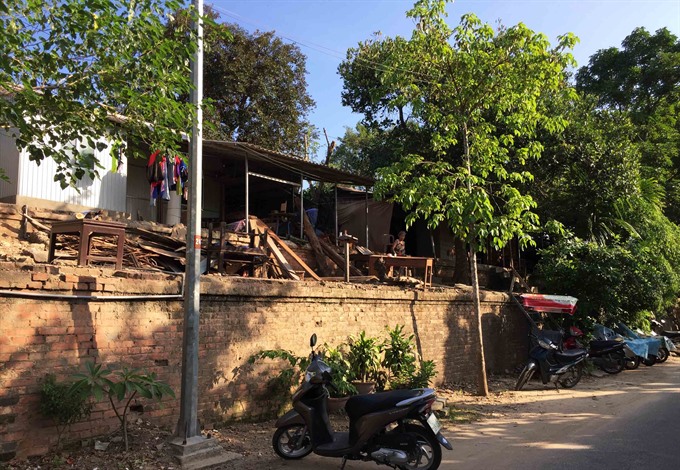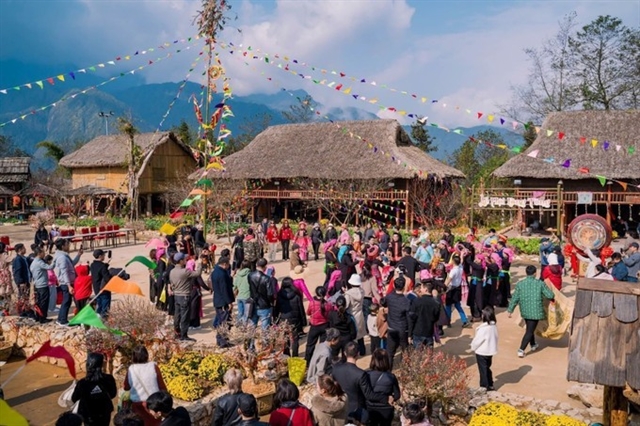 Society
Society

Around 500 families in Huế City in central province of Thừa Thiên-Huế will be removed from their homes and relocated to another part of the city.
 |
| Residents living illegal on top of the historic citadel wall in Huế. Some 500 families will be removed in the next few months. — VNS Photo Phước Bửu |
THỪA THIÊN-HUẾ — Around 500 families in Huế City in the central province of Thừa Thiên-Huế will be removed from their homes and relocated to another part of the city.
This is part of a six-year evacuation plan to protect the citadel wall system which was built by the Nguyễn Dynasty (1802-1945).
Illegal homes began appearing in the area around 40 years ago.
Today there are around 4,200 families living on the walls and some even in dynasty-constructed buildings.
There were several ways of occupying the walls. The majority of them have built concrete structures, breaking part of the wall to make entrance alleys. Many others construct temporary houses on top and erect wooden ladders to reach them. Others have made use of collapsed sections, clearing the debris for housing or demolishing the wall themselves to construct homes.
According to a decision recently issued by the city People’s Committee, the plan is to move around 523 families living on the top of the historic wall this year.
According to the committee, the site clearance of 9.9ha land will be completed by the end of March.
The committee pledged the transparency in compensation and resettlement of the families. They also held a public campaign to inform the community and seek support for the evacuation plan.
The committee also has agencies working to find out the best way to make use of the heritage walls for tourism.
The committee’s speaker Hoàng Ngọc Khanh said these illegal residents are not entitled to compensation under Vietnamese land use law.
However, due to the historical situation and the large number of the residents, local authorities had to build up a special plan to free them from the heritage walls.
The illegal housing and lodging started after the war due to the upheaval as well as the wrong perception of local authorities over the role of the Nguyễn Dynasty in Vietnamese history.
The evacuation idea was first discussed in 1993, when all relics built by the dynasty in Huế were recognised as world cultural heritage by UNESCO. But local authorities failed to carry out the evacuation, facilitating another surge of illegal lodging in 1999 after many locals lost their home and boats due to a historic flood occurred in the province.
The large number of illegal residents has caused damage and subsidence to the wall. Wastewater and farming activities on the top of the wall have also caused erosion.
According to a report by Huế Monuments Conservation Centre, the local government body managing all relics built by the dynasty in the province, the illegal lodgings have created critical pollution inside the citadel as well as causing floods as many lakes in the citadel were filled for those illegal buildings. — VNS




